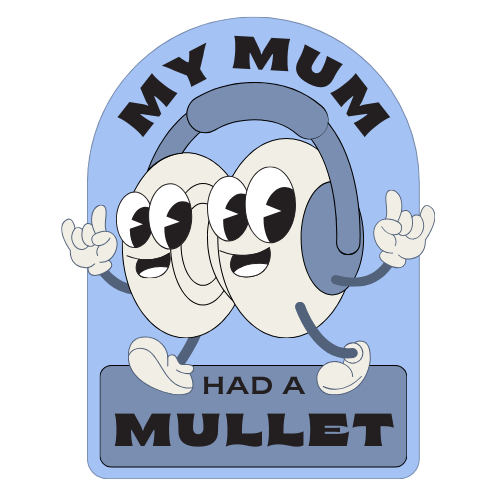What Lily Allen’s feet pics tell us about the music industry
“Don’t hate the player, hate the game.”
On the 25th of October, Lily Allen shared photos of her feet on her Twitter profile. When a user criticised her for being “reduced to this” (meaning selling photos of her feet online), she replied, “Imagine being and artist and having nearly 8 million monthly listeners on Spotify but earning more money from having 1000 people subscribe to pictures of your feet. Don’t hate the player, hate the game.”
The music industry is a notoriously broke one. Out of all the major entertainment industries such as film, television, and gaming, music makes the least amount of money. And of those in the music industry, artists tend to get the shorter end of the stick.
It’s not uncommon for record labels to take home 80% of the profit from an artist’s music. Hell, it’s not even uncommon for them to take 90%. Generally, record labels make five times as much money as the artists they sign.
Now granted, labels arguably invest a lot of money into the artists. A major label should provide artists with promoters, accountants, lawyers, managers, marketers, a sales team, product managers, producers, distributors, and more. There’s a lot at stake for a label as well. But when labels only sign artists that already have built a following on social media—because they want guaranteed sales—this immediately makes a lot of that marketing and promotion work unnecessary. And yet, the deal remains the same.
In the words of Ricky Montgomery, “the world has found a way to put most of the marketing burden onto the artist, who’s supposed to be working on art.” Musicians no longer have the luxury of disappearing for months to record an album. And when the album is finally out, they have to do even more promotion. If they don’t, they have to explain why, like Fiona Apple explaining why she didn’t attend to Grammys to receive her award.
The music industry has never been just about the music, and it would be naive to think it ever will be. It makes sense that to make money off of anything, you have to get people to buy it, and in order to do this, you have to promote the product. But things get questionable when labels aren’t doing much of the promotional work and still taking most of the artist’s profit. It just doesn’t add up.
“The music industry has never been just about the music, and it would be naive to think it every will be.”
And streaming services don’t pay equally either. As of 2020, streaming services accounted for 62% of the total global recorded music revenue. And yet they pay artists an average of $0.001 per stream. The consumption and distribution of music is now easier than ever, but that doesn’t mean that artists don’t need help with everything else.
This all makes Thom Yorke’s melodramatic claim that Spotify is “the last desperate fart of a dying corpse” a bit more understandable.
So… what now?
It’s one thing for me to sit in my dark cave, dusting off books and reading articles about the unequal distribution in the industry, then write an article about how much it sucks, then crawl back into my cave. But if you even slightly dip your toe into this industry, you know this already.
So where do we go from here?
Well, it all starts with conversation. Videos like the one by Ricky Montgomery are crucial to understand the expectations put on musicians in today’s world. While the internet is a wonderful tool to share music, it’s also an easy out for labels not to help artists with their marketing.
By understanding where the problem lies, we can start to fix it. And luckily, more and more artists are taking matters into their own hands. James Blake is the perfect example: fed up with the unfair distribution between musicians, streaming services, labels, and social media platforms, he launched Vault, cutting out the middle men and focusing on a direct artist-to-fan relationship.
While it’s grim that Lily Allen makes more money from selling photos of her feet than from her art, it’s the first time that discussions like these are happening. She, RAYE, and James Blake are leveraging their anger in a productive way: calling bullshit on the unequal distribution and making the businesses they wish they had. And yet, that’s still time they could be spending making their art.
Over in the US, a new bill is being put in place to ensure artists get paid at least 1 cent per stream for their songs. The fact that artists are essentially having to beg and settle for such low numbers is jarring, to say the least. But… it’s progress.
“The future of the music industry lies in transparency and collaboration.”
There need to be more labels who fairly pay their artists. The future of the music industry lies in transparency and collaboration. The internet was meant to lower the barriers between artist and fan, but somewhere along the way, we lost the plot.
Yes, it’s easier than ever to release music, but that just means labels have to do less work—especially because they are signing people who already have built a brand. It’s not right to keep the same contracts that have been in place for decades when the industry and technology have evolved well past those norms.
Music is a powerful, exciting force that since the dawn of time has been a way of telling stories, sharing culture, connecting societies, soothing and exciting people, sparking movements, and often literally saving lives. And yet, it’s been milked, bashed, disrespected, and stripped down to a product.
I am a firm believer that there is a correct way to commodify music, even if that word is ugly. The idea of someone making a living off of art is beautiful. But to make that possible, the disrespect has to end. Streaming services have to pay the artists, and record deals have to respect the records they sign.
As a fan, if you want to support your favourite artists, it’s easy. Buy their albums rather than just streaming, buy their merch (it’s now their main source of income), and go to their concerts. Until a label comes along that genuinely has the artists’ best interests at heart, we do what we can to help them.
But that day will come, because musicians are fed up.

